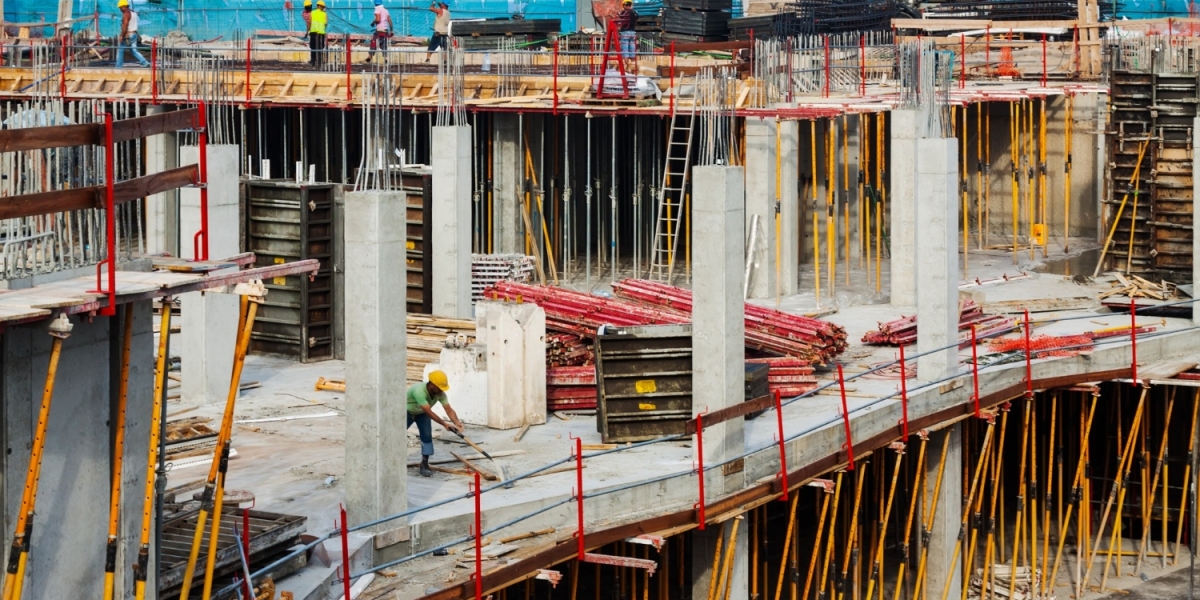Introduction
From mining shafts that reach deep into the earth to massive infrastructure projects like subways and road tunnels, underground construction plays a critical role in modern society. Yet working beneath the surface comes with serious challenges. Unstable ground, water ingress, and shifting geological conditions can jeopardize worker safety and compromise project timelines. For this reason, innovative materials and techniques have been developed to enhance underground stability, reduce risks, and extend the lifespan of structures.
Two of the most effective solutions in this area are cable grout and tunnel guard. Cable grout ensures that rock bolts and cables used for reinforcement are securely bonded, while Tunnel Guard provides a protective spray-applied layer that stabilizes surfaces and resists environmental stresses. Together, these technologies form the backbone of safe, efficient, and sustainable underground construction and mining practices.
In this blog, we’ll explore the role of cable grout in reinforcement systems, explain how Tunnel Guard enhances underground stability, and examine how these two solutions complement each other in real-world applications. We’ll also discuss cost considerations, innovations, and case studies to provide a complete picture of why these technologies are indispensable today.
The Role of Reinforcement in Underground Stability
Whenever rock or soil is excavated for mining or construction, the natural equilibrium of the ground is disturbed. Without proper reinforcement, this imbalance can result in loose rock, collapses, or even catastrophic tunnel failures. To address this, engineers install rock bolts, cables, and anchors that secure unstable ground back to more stable rock masses.
But installing bolts and cables alone is not enough. For maximum effectiveness, they must be firmly bonded to the surrounding rock with specialized materials—this is where cable grout comes in. Proper grouting ensures load transfer between the reinforcing element and the surrounding ground, preventing slippage and ensuring the reinforcement system functions as designed.
What Is Cable Grout?
Cable grout is a high-performance cementitious or resin-based material used to anchor rock bolts, cable bolts, and ground support systems. Once injected into the borehole, it fills voids and hardens around the reinforcement, locking it securely in place.
Key Benefits of Cable Grout:
Strong Bonding: Provides superior adhesion between steel reinforcement and rock, reducing slippage.
Durability: Designed to resist corrosion, chemical attack, and water infiltration, extending the lifespan of support systems.
Versatility: Can be applied in a variety of geological conditions, from hard rock to softer sedimentary formations.
Load Transfer: Ensures that stress is evenly distributed across the rock mass, enhancing stability.
Without effective grouting, reinforcement systems may fail under pressure, creating significant safety hazards and increasing long-term costs.
Tunnel Guard: Surface Protection for Underground Stability
While cable grout works “behind the scenes” to anchor reinforcement systems, Tunnel Guard addresses another critical issue: surface-level protection.
Tunnel Guard is a spray-applied protective liner developed specifically for underground mining and tunneling. Applied directly to rock faces, it creates a durable, flexible barrier that stabilizes surfaces and shields against external stresses.
Advantages of Tunnel Guard:
Rapid Application: Can be sprayed directly onto irregular rock surfaces for immediate protection.
Water Resistance: Seals against water ingress, one of the biggest challenges in underground environments.
Durability: Withstands harsh underground conditions, including vibration, moisture, and chemical exposure.
Safety: Reduces the risk of rockfalls and loose debris in active work areas.
In essence, Tunnel Guard acts as a shield that complements internal reinforcement systems like bolts and cables.
How Cable Grout and Tunnel Guard Work Together
The effectiveness of underground reinforcement lies not in a single solution but in the combination of multiple protective measures. Cable grout and Tunnel Guard serve different but complementary purposes:
Cable Grout: Provides deep anchoring of support elements, securing unstable ground masses.
Tunnel Guard: Stabilizes exposed surfaces, preventing smaller fragments and water ingress from compromising safety.
Together, they create a dual-layer defense: one that strengthens the internal rock structure and another that protects the visible tunnel walls. This synergy is critical in environments like mining tunnels, where geological conditions can change rapidly and unpredictably.
Case Study: Platinum Mine Reinforcement
A platinum mine in South Africa faced ongoing issues with fractured rock and water seepage. Initial attempts using mechanical supports and ungrouted bolts were ineffective, leading to frequent collapses and costly downtime.
By introducing cable grout for bolt anchoring and Tunnel Guard as a surface liner, the mine achieved dramatic improvements:
Rockfalls reduced by 65% within the first year.
Water ingress minimized, improving working conditions.
Maintenance downtime cut nearly in half.
This example illustrates how a combined approach—anchoring internal structures with grout while sealing and stabilizing surfaces with Tunnel Guard—delivers superior results.
Cost Considerations: Value Beyond the Price Tag
When evaluating solutions like cable grout and Tunnel Guard, decision-makers often focus on upfront costs. While these products may require higher initial investment compared to traditional methods, the long-term value is substantial.
Why the Investment Pays Off:
Reduced Downtime: Stable tunnels mean fewer interruptions to mining or construction schedules.
Improved Safety: Fewer accidents and collapses lower insurance costs and enhance worker morale.
Lower Maintenance: Durable systems require fewer repairs, reducing long-term expenses.
Extended Lifespan: Proper reinforcement and protection extend the operational life of tunnels and shafts.
Ultimately, investing in advanced solutions is not just about safety—it’s also about profitability and efficiency.
Innovations in Cable Grout and Tunnel Guard Technology
The mining and construction industries are constantly evolving, and so are their support systems.
Cable Grout Innovations:
High-Performance Resins: Provide rapid curing in wet or chemically aggressive environments.
Eco-Friendly Formulations: Incorporate recycled materials to reduce carbon footprint.
Pumpable Systems: Allow for quicker, more consistent installation in deep boreholes.
Tunnel Guard Innovations:
Fiber-Reinforced Liners: Enhance flexibility and crack resistance.
Smart Monitoring Additives: Emerging technologies include sensors embedded in liners to monitor stress or moisture.
Greener Products: New formulations prioritize reduced environmental impact without compromising performance.
These advancements ensure that reinforcement and protective systems keep pace with the demands of deeper, more complex projects.
Sustainability and Environmental Responsibility
Modern mining and construction projects face increasing scrutiny regarding their environmental impact. Fortunately, solutions like cable grout and Tunnel Guard are adapting to meet these challenges.
Cable grouts that incorporate supplementary cementitious materials, such as fly ash, reduce CO₂ emissions.
Tunnel Guard formulations are being designed for lower rebound and waste during spraying, minimizing material use.
Longer-lasting support systems mean fewer repairs and less material consumption over the life of the project.
By adopting sustainable practices, companies can improve their environmental credentials while still maintaining safety and efficiency.
The Role of Specialists in Implementation
Just as important as the materials themselves are the experts who design and apply them. Skilled contractors and engineers ensure that cable grout is mixed, pumped, and cured properly, and that Tunnel Guard is applied evenly for maximum coverage and durability.
Improper application can compromise both systems. For example, poorly mixed grout may leave voids around bolts, while incorrectly applied Tunnel Guard can result in uneven protection. By working with experienced specialists, companies ensure that they get the full benefits of these advanced technologies.
The Future of Underground Reinforcement
Looking ahead, underground reinforcement is set to become smarter, safer, and more efficient. The integration of digital technologies like sensors and real-time monitoring will give operators immediate insight into tunnel stability. Meanwhile, advances in material science will deliver stronger, faster-curing, and more environmentally friendly products.
Cable grout and Tunnel Guard are not just tools of today—they represent the foundation for future innovations in underground safety and construction.
Conclusion
Underground construction and mining demand solutions that balance safety, efficiency, and sustainability. Cable grout and Tunnel Guard address these challenges from two angles: anchoring reinforcement systems deep within the rock and stabilizing exposed surfaces for immediate protection.
When used together, they create a powerful, integrated system that reduces risks, lowers costs, and extends the lifespan of tunnels and shafts. By investing in these advanced solutions and partnering with skilled specialists, industries can build safer, stronger, and more sustainable underground operations.
Frequently Asked Questions (FAQ)
1. What is the main purpose of cable grout?
Cable grout is used to anchor rock bolts or cable bolts into surrounding rock. It ensures strong bonding, effective load transfer, and long-term stability in underground reinforcement systems.
2. How does Tunnel Guard differ from shotcrete?
While both are spray-applied, Tunnel Guard is specifically designed as a protective liner with flexibility and water resistance, whereas shotcrete is a concrete-based material for structural support. Tunnel Guard is lighter and more focused on surface protection.
3. Can cable grout and Tunnel Guard be used together?
Yes. Cable grout secures reinforcement elements within the rock mass, while Tunnel Guard stabilizes the exposed tunnel face. Together, they provide a comprehensive ground support solution.
4. Are these solutions only for mining?
No. While widely used in mining, both cable grout and Tunnel Guard are also valuable in civil engineering projects such as subway tunnels, hydroelectric facilities, and underground storage systems.
5. What factors affect the cost of using these solutions?
Costs vary depending on geology, tunnel size, environmental conditions, and material specifications. Although upfront costs may be higher, they reduce long-term expenses by lowering maintenance needs and downtime.
6. How long do Tunnel Guard and cable grout systems last?
When applied correctly, both systems are designed for long-term durability, often lasting decades. Their lifespan depends on factors such as geological conditions and maintenance practices.









